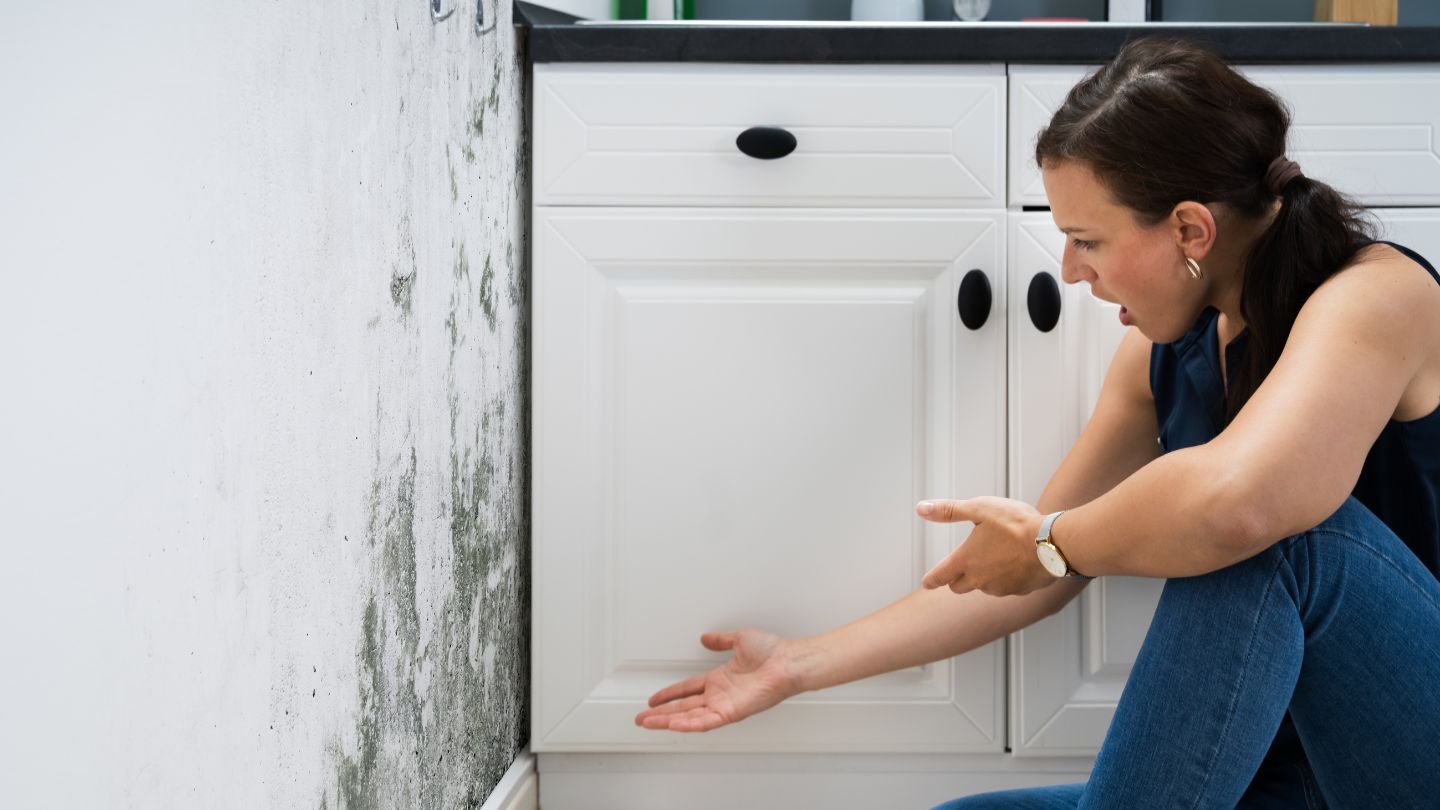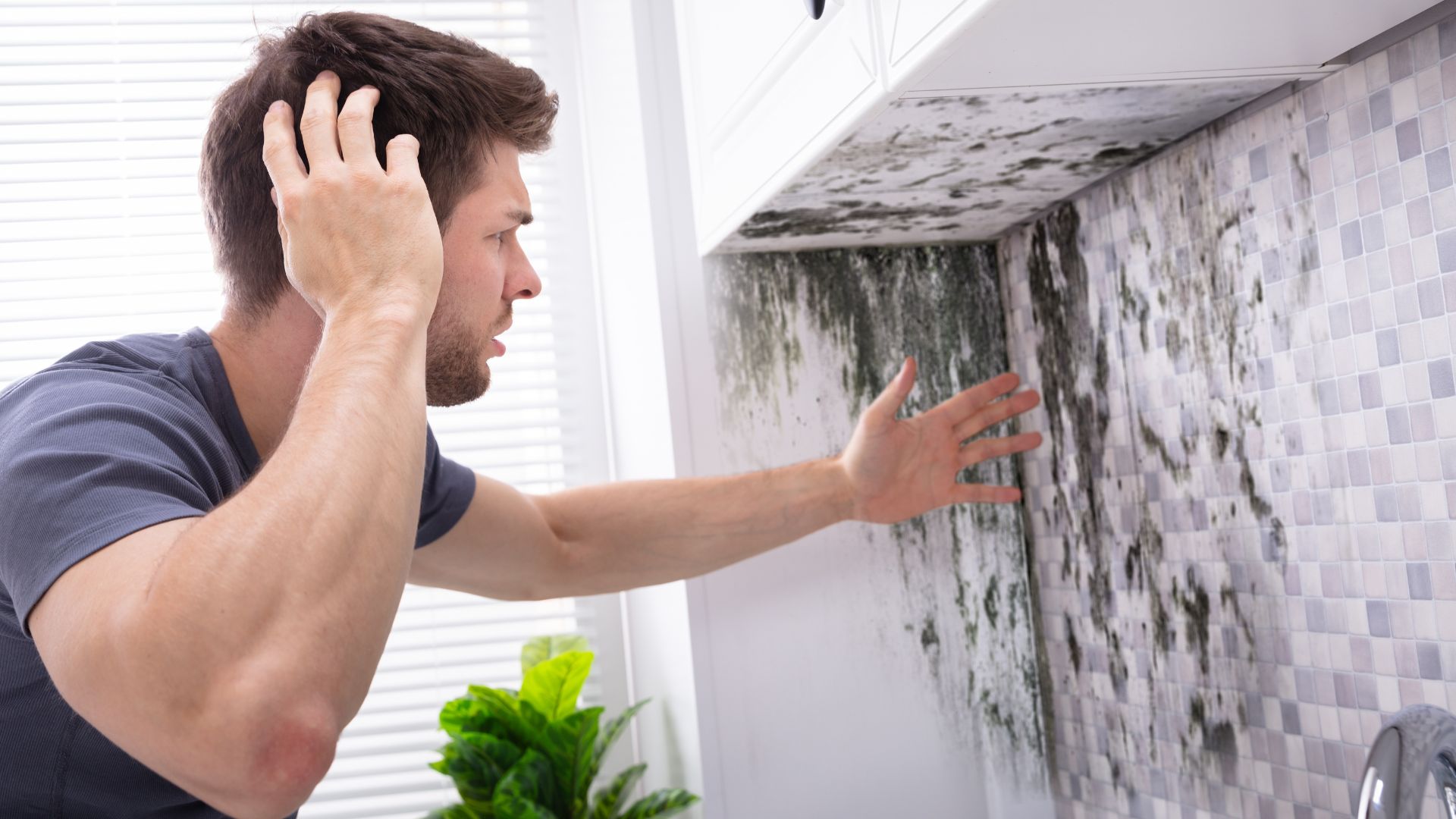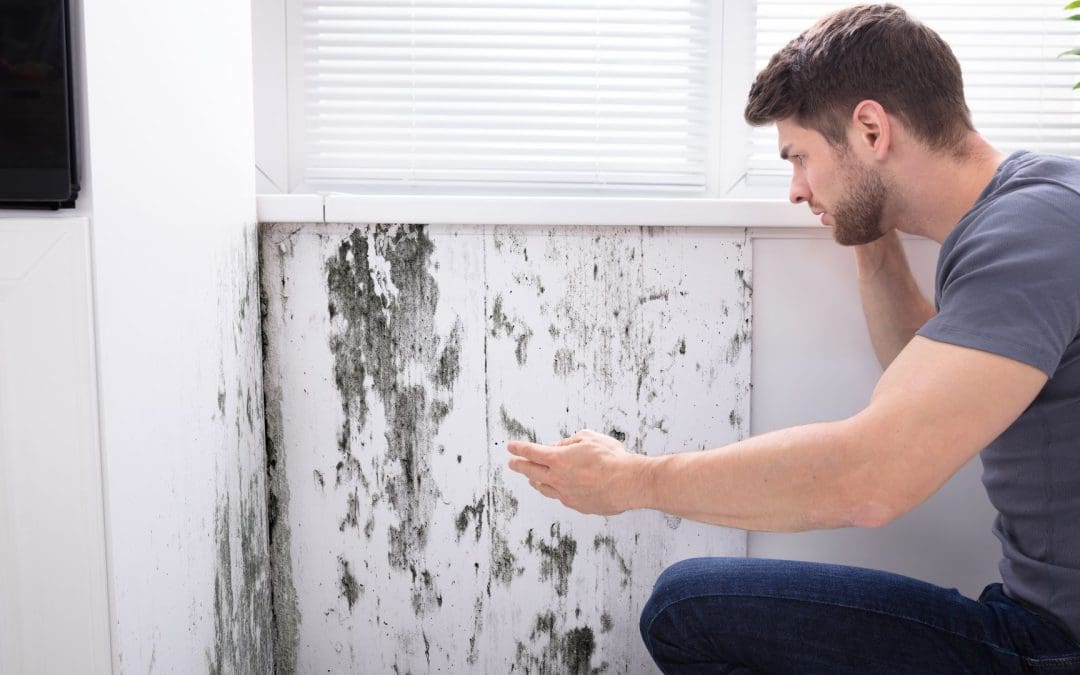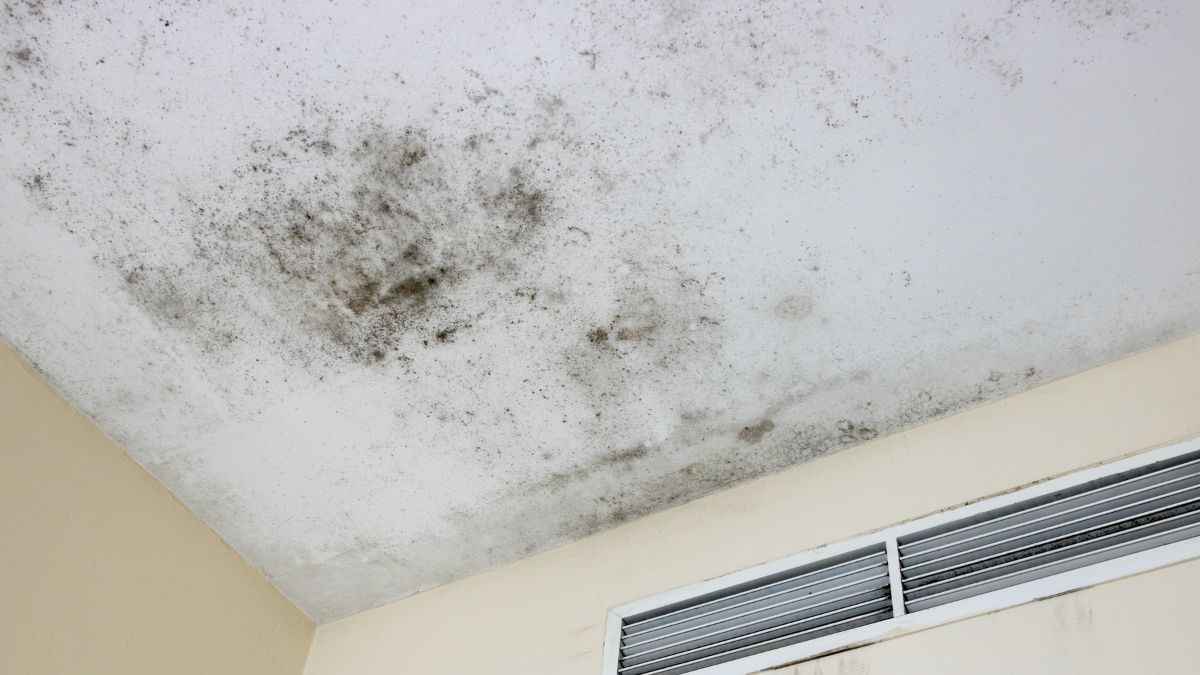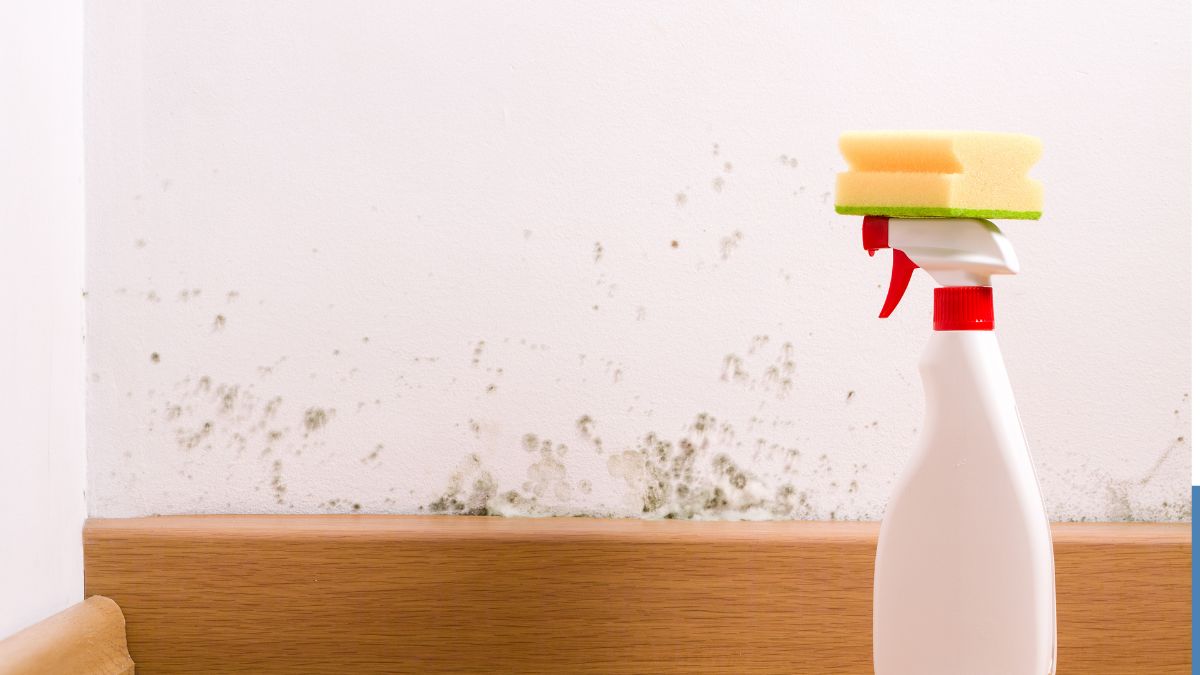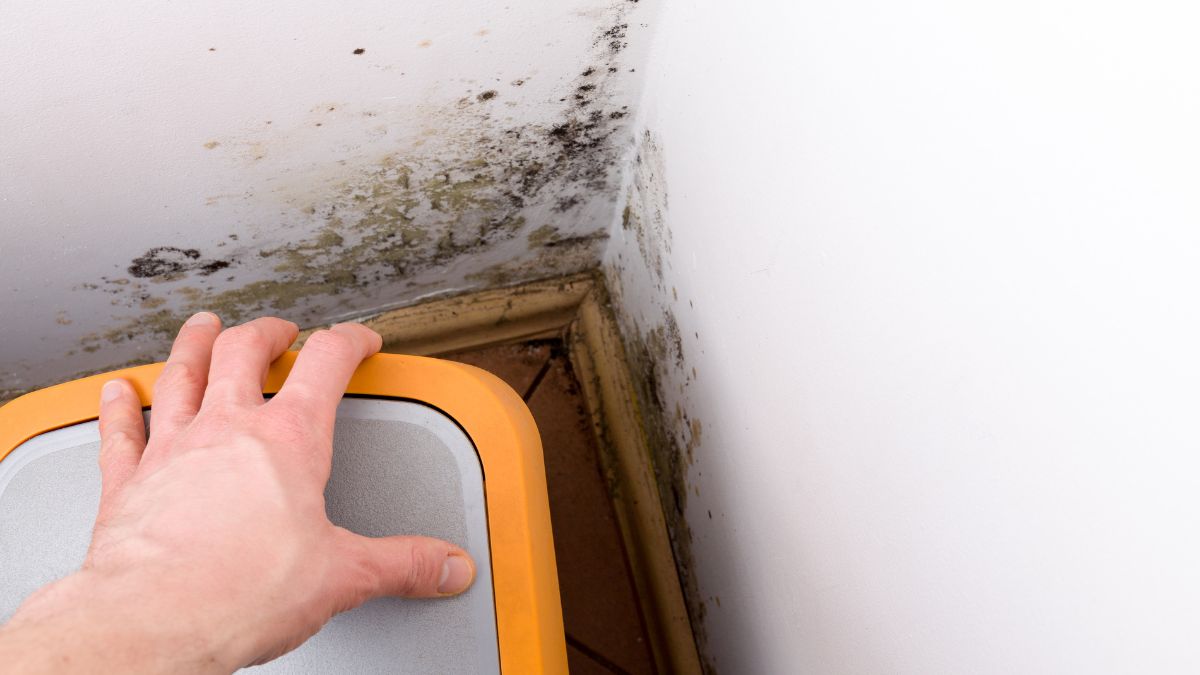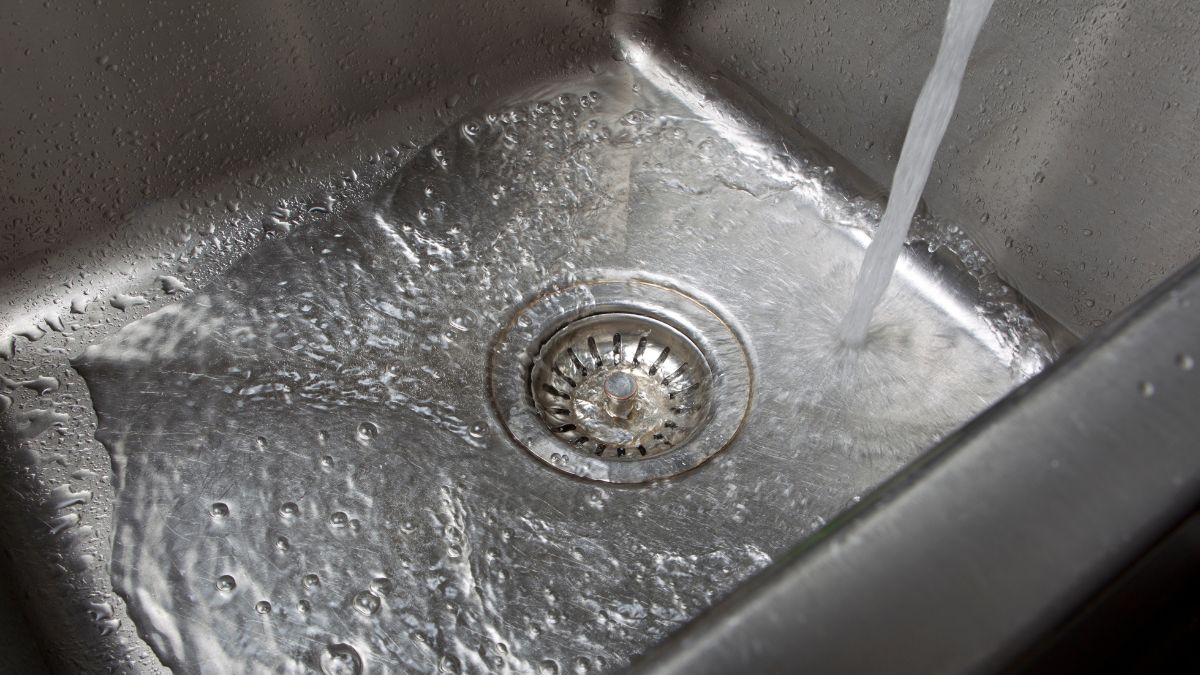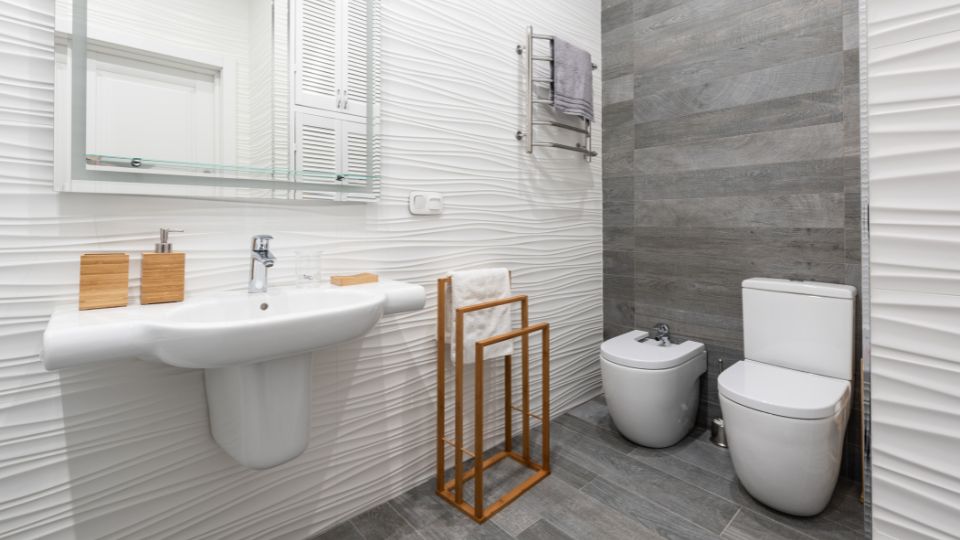
by Mold-B-Gone | Jul 9, 2024 | Mold Facts
Mold damages property and poses health dangers—in addition to forming ugly marks on walls. Mold spores cause potential inflammation and respiratory complications. Because the spores can float through the air, it is common to wonder if opening windows helps with mold.
Moisture Gradient Dilemma
Keeping windows open to help with mold works in two different ways.
1. Opening a window to reduce spore buildup
Opening a window only works if there is less moisture outside than inside. If you open your windows when there is more moisture outside, that moisture moves in and increases spore colony formation, even though the intention was to allow accumulated spores to blow out through the windows! So, will opening windows help with mold? It depends on the level of humidity inside and out.
2. Opening a window to allow in cold air
Warm, humid environments accelerate spore multiplication. Meanwhile, opening a window to allow in cold air may lower the temperature, thus hindering spore multiplication. If that cold air is humid, however, this may increase mold spore growth and spread them further!
Logical Considerations
Does opening a window help with mold or not? Opening a window when it is raining allows for more moisture to enter and intensify spore formation. On the flip side, opening the window will lower the warm room temperature, which favors colony formation. However, wind may blow in more spores and moisture from outside. Since opening windows is not enough to solve a mold infestation, seek professional guidance from mold remediation experts in Atlanta, GA
Your DIY Effort
Here are some steps to help reduce spore multiplication in your household:
- Strategically position dehumidifiers closer to the colony to reduce moisture.
- Use bathroom vents to reduce indoor moisture.
- Ensure wet clothes are put in the dryer and not hung indoors.
- Repair leaking roofs, water lines, and broken floors to reduce indoor moisture.
- Consider allowing spores and their mycotoxins to leave by briefly opening the house as you remove the colony.
Read More: Top 15 Mold Prevention Tips
Trust Expert Intervention
The management and control of mold is not easy, and you may not be able to handle it with your limited know-how. DIY intervention risks disturbing the mold colony and releasing mycotoxins into the atmosphere, which may pose severe health risks and possibly spread the mold more throughout your house.
Do you need help ridding your home of mold? Mold remediation experts in Atlanta are up to the task! By engaging experts like Mold-B-Gone Remediation, you are taking a vital step toward eradicating mold and securing your family against its harmful effects. Contact us today for more information.

by Mold-B-Gone | Jun 24, 2024 | 37 Symptoms Associated With Mold Illness
Molds are a common problem that can eventually create serious health and structural issues at home. Prevention and reduction both call for an understanding of how exactly the climate influences the development of molds. This article explains the relationship between climate and molds, such as ideal conditions for molds, how temperature affects mold growth, and more.
What Is It and Why Does It Matter?
Mold is a fungus that loves to reside in an area that is wet and has warmth. It is usually spread through the air by spores. These spores land on a particular surface and, under conducive conditions, grow there. Mold growth may cause various health problems, such as difficulty in breathing, allergies, and infections. It is, therefore, vital to control mold growth in a place of residence.
Favorable Conditions for Growth of Mold
Mold requires four main components to grow: moisture, warmth, oxygen, and a food source. Organic materials are the common substrates, including most woods, paper, and fabric. The best temperatures for this kind of organism are usually between 60 and 80 degrees Fahrenheit, although some species can multiply outside this temperature range. High relative humidity makes a significant contribution to the proliferation of mold during its development. A relative humidity above 60% is considered ideal for mold growth.
At What Temperature Does Mold Grow?
Temperature is very important in the growth of molds. Molds can be found to grow at about 40°F; however, ideal growth is typically at a higher temperature. During the cooler months, heating a room inside a building results in relatively warmer and damper air, which is conducive for molds to grow. Thus, knowing how temperature affects mold growth is fundamental to its effective management.
Humidity And Molds
If there were a singularly most important factor in mold growth, it might be humidity. Mold grows in the presence of moisture, and high relative humidity (greater than 60%) permits mold spores the water needed for germination and growth. Proper ventilation and the use of dehumidifiers can control indoor humidity.
Read more: Understanding How Mold Grows in Different Humidity and Temperature Conditions
Controlling Mold Growth in Response to Climate Changes
A damp build-up in the home should be controlled as a way of dealing with the growth of mold in whatever climatic condition. If mold is a problem, seek professional help. For Atlanta, Georgia, residents, Mold-B-Gone Remediation, the mold remediation experts in Atlanta, offers full services of mold inspection and removal for a home that assures its residents of a healthy living environment. Call us today and ensure that your home will be safe from the bad effects of mold.

by Mold-B-Gone | Jun 17, 2024 | Indoor Air Quality
Molds are a fungus that needs a damp, humid environment to propagate. They can appreciably change the indoor air quality. Therefore, it is very important to understand how mold affects air quality in order to keep a healthy living space.
How Mold Affects Air Quality
The fungus spores are launched into the atmosphere, and subsequently, people nearby might inhale them. This can lead to many allergic reactions. It causes respiratory problems, and such kinds of conditions spread throughout a person’s body. Many types of mold consist of mycotoxins. These mycotoxins cause many adverse reactions like headaches, fatigue, and irritation to the eyes, nose, and throat. This will exacerbate many conditions like asthma or other chronic lung diseases if exposed to it for a longer period.
Read more: Indoor Air Quality: Why It Matters and How to Improve It
How to Know When Mold Is Affecting Your Air Quality
Many signs will tell you that there could be mold affecting your air quality. The most obvious sign is noticing a general musty smell. Visible mold growing on walls, ceilings, or other surfaces is another overt sign. Health symptoms, like sneezing, coughing, or respiratory problems that seem to worsen when you’re indoors, could indicate you are affected by mold.
Read more: Why Should I Have An Indoor Air Quality Test?
Are Air Mold Tests Accurate?
Air mold tests are helpful in detecting the presence of mold spores in the air and their concentration. These tests concern collecting samples for air mold and then having them analyzed in a laboratory. However, results can vary greatly depending on many factors. Those factors can include when the sample was taken, which locations were sampled, and the methods used. While air mold tests provide valuable information, they shouldn’t be used alone for evaluation; this would involve a visual examination and then surface sampling.
How to Get Rid of Mold in the Air in Your Home
Do the following to effectively get rid of mold spores in the air inside your home:
- More Ventilation: Let air from your house cross-ventilate to reduce humidity and prevent mold growth.
- Air Purifiers: HEPA filters can capture mold spores, improving air quality.
- Natural Remedies: Many people use essential oils; for example, tea tree oil has antifungal properties that kill mold spores in the air naturally.
- Dehumidifiers: Maintain indoor humidity below 50 percent to prevent mold growth.
- Regular Cleaning: Clean and disinfect places where mold usually grows, like in bathrooms and kitchens. Use a solution that kills mold.
When to Get Professional Help
If mold remediation becomes a significant concern, it’s essential to consider professional services such as indoor air quality testing in Atlanta. Mold-B-Gone Remediation offers exceptional mold cleaning services in Atlanta to ensure your home remains mold-free and safe. We also specialize in crawl space encapsulation, mold remediation, water damage restoration, and other related services. Contact us today to ensure a healthier, safer living environment for you and your family!
We also proudly serve Johns Creek, Lawrenceville, Marietta, and surrounding areas, offering comprehensive mold remediation services wherever you need them.

by Mold-B-Gone | May 22, 2024 | Black Mold
The presence of mold in your home can be a cause for concern. However, the severity of the issue depends on the specific type of mold present. While some molds may cause only cosmetic issues, others can pose significant health risks.
This article explores the key differences between black mold and common household mold to aid in proper identification and necessary action.
Health Risks of Black Mold
Black mold, particularly Stachybotrys chartarum, poses significant health risks. Exposure to its spores can lead to:
- Respiratory problems
- Skin irritation
- Fatigue
- Headaches
Individuals with mold allergies or compromised immune systems are especially vulnerable. The presence of black mold in your home should prompt immediate action to prevent these health issues.
Read more: Why Is Black Mold A Health Concern?
Appearance
One of thedifferences between black mold and regular mold is the color. Black mold stands out with its dark, greenish-black color, which often raises concern among homeowners due to its potential health hazards. In contrast, regular molds, sometimes confused with yeast, can appear in a variety of colors, such as green, gray, brown, or even black. This wide range of colors can sometimes make it difficult to identify mold type based solely on appearance.
Prevalence
Another difference between black mold and regular mold extends to their prevalence. Black mold is less common and is usually found in water-damaged buildings. It thrives in environments with chronic moisture issues, indicating a need for immediate attention and remediation. On the other hand, regular mold is more widespread and can be found in damp areas like bathrooms, kitchens, and basements.
Toxicity
Toxicity is another critical factor when comparing black mold vs regular mold. Black mold is particularly concerning due to its ability to produce mycotoxins. These toxic substances can lead to severe health problems. While regular mold can also produce mycotoxins, it is less common and typically less severe. However, regular mold can still cause allergic reactions and respiratory issues, especially in sensitive individuals.
Habitat and Texture
The habitats of these molds provide further distinctions. Black mold is common in very damp areas and often has a slimy texture. Its presence usually indicates long-standing moisture problems that require thorough inspection and repair. Regular molds, which can range from fuzzy to powdery in texture, typically flourish in any consistently damp environment, making them more common in households.
Ensure a Mold-Free Home
Recognizing the difference between regular mold and black mold is vital for maintaining a healthy home. While both types of mold require attention, the severe health risks associated with black mold necessitate prompt and professional remediation. At Mold-B-Gone Remediation, we offer expert mold cleaning services in Atlanta to address these issues. For a healthier home, contact Mold-B-Gone Remediation.

by Mold-B-Gone | May 8, 2024 | Mold Facts
Mold in the home can present itself in various colors. Recognizing these colors can help you identify potential risks and address mold issues promptly. Here, we explore the different types of mold colors commonly found in households.
Black Mold
Black mold is one of the most well-known mold color types, and it often incites concern due to its association with health risks. The most infamous is Stachybotrys chartarum, also known as toxic black mold. This mold thrives in damp, leaky areas like basements and roofs. It can produce harmful mycotoxins that lead to respiratory issues, headaches, and even blood poisoning.
However, not all black molds are toxic. Alternaria and Aspergillus are other types of mold colors that can appear black. While Alternaria is less dangerous, often exacerbating asthma, Aspergillus is a common household mold that usually doesn’t pose severe health risks unless found in large quantities.
Read more: The Truth About Black Mold!
White Mold
White mold is another frequently encountered color, often appearing fuzzy or powdery. Chaetomium is a type that prefers dark, damp areas and can emit a musty odor. Penicillium, which can sometimes appear white, is significant in medical history for penicillin but can cause allergic reactions if mishandled. Alternaria, which can change colors based on conditions, is another common white mold.
Yellow Mold
Yellow mold can be quite deceptive, ranging from pale to bright hues. Aspergillus can sometimes appear yellow, typically low-risk but requiring attention if found in large amounts. Serpula lacrymans target wood, threatening structural integrity rather than health. Epicoccum nigrum and Geomyces pannorum are other yellow molds that thrive in damp conditions. Particular caution is needed for yellow slime mold, an unrelated organism that is very toxic.
Red Mold
Red mold is often seen on water-damaged materials like drywall and particleboard. While the color red can appear in various molds, Aspergillus is a common culprit due to its prevalence. Neurospora is more likely the red mold found on food, indicating spoilage.
Green Mold
Green is the most common color for mold, with thousands of molds appearing green at some point in their lifecycle. The different types of mold colors that typically appear green include Aspergillus, Penicillium, and Cladosporium. While green mold is common, it is still essential to address it to prevent potential health issues and structural damage.
When in Doubt, Call in the Professionals
Identifying different kinds of mold colors can help you understand the potential risks and take appropriate action. Mold, regardless of color, can pose health risks and damage your property. For a thorough and safe solution, contact Mold-B-Gone Remediation, your mold remediation experts in Atlanta.

by Mold-B-Gone | Apr 23, 2024 | Indoor Air Quality
When pondering what mold smells like in a home, most people describe the odor as musty. Some liken it to an earthy or meaty scent, similar to wet socks or rotting wood. This distinct aroma is not solely from the mold itself but from microbial volatile organic compounds (MVOCs) released during various stages of its growth. These odors are typically unpleasant and pungent, alerting homeowners to potential mold issues hidden within their living spaces.
Tracing Mold’s Entry into Homes
Mold spores are ubiquitous in the environment and can enter homes through open doors, windows, vents, and HVAC systems. They can also hitch a ride indoors on clothing, shoes, and pets. Once inside, mold needs moisture to start growing.
Common sources of indoor moisture that may lead to mold include leaks in roofs, windows, or pipes, as well as areas with flooding. Homes with poor ventilation, especially in places like bathrooms, laundry rooms, and kitchens, are also at higher risk for mold development.
Common Molds in Residential Spaces
In residential settings, various types of mold can be found, each with unique characteristics and potential impacts on health. Some common indoor molds include Cladosporium, Penicillium, Aspergillus, and Stachybotrys, often referred to as black mold.
Read more: What Is Black Mold?
Cladosporium typically appears on fabrics and wood surfaces, while Penicillium might proliferate on wallpaper, fabrics, and insulation. Aspergillus is often found in house dust. Stachybotrys is notorious for growing on damp surfaces like drywall with high cellulose content.
Mold and Its Health Implications
The smell of mold can be more than just a nuisance—it indicates the presence of mold, which poses various health risks, particularly to individuals with pre-existing conditions such as allergies, respiratory issues, or compromised immune systems. Exposure to mold and its smell can lead to symptoms like nasal stuffiness, eye irritation, or skin rashes. More severe reactions include asthma attacks or more serious respiratory complaints. Particularly vulnerable are those who are mold-sensitized, as they might experience more acute symptoms upon exposure.
Ensuring a Healthy, Mold-Free Environment
Maintaining a mold-free home is crucial for ensuring the health and well-being of all residents. Regular inspections and prompt attention to any signs of moisture can prevent mold from taking hold. If you smell mold in the walls or the basement,it’s essential to address these issues swiftly.
For comprehensive mold remediation services in Atlanta, reach out to Mold-B-Gone Remediation. We specialize in mold remediation, offering tailored solutions for mold-sensitive individuals. Let us help you restore your home to a safe and healthy environment. Contact us today for mold cleaning services in Atlanta.

by Mold-B-Gone | Apr 10, 2024 | Mold Facts
Mold can be a persistent problem in homes, especially in humid environments. If you’re facing mold issues, understanding how to properly prepare for mold remediation can make the process smoother and more effective. This guide offers tips to prepare your home for professional mold removal, focusing on essential measures before the experts arrive to tackle the mold in your home.
Initial Steps Before Mold Remediation
Before the professionals arrive, there are several key actions you should take to ready your home for the process. First, it’s crucial not to disturb any mold-infested areas. Moving items or attempting to clean mold can spread spores throughout your home, complicating the remediation efforts.
To safeguard your health and that of your family, consider finding temporary accommodation. Just as you would secure a safe place for your pets during the remediation, it’s wise for you and your family to stay elsewhere.
Securing Your Home Environment
As part of your preparation, you should also take air quality samples. Knowing the specific types of mold present can help the professionals tailor their approach, ensuring a more targeted and effective remediation. Keeping your belongings stationary is vital, as even moving a small item can disperse mold spores.
Additionally, take photographs of all affected areas. These images can provide a before-and-after comparison and serve as documentation in case of any disputes or damages. This is a crucial step in preparing your home for mold removal.
Safeguarding Belongings and Living Areas
Another important aspect of preparation involves your personal items. Wash any clothing or fabrics that have been exposed to mold. Use hot water and regular detergent instead of bleach, which can damage delicate materials. After washing, seal these items in plastic bags to prevent recontamination.
During the mold remediation, your home will undergo extensive cleaning and possibly structural changes to eliminate mold sources and prevent future growth. Understanding this time frame and planning accordingly can help you manage the disruption to your daily life.
Ready, Set, Remediate!
As you prepare your home for professional mold removal, remember that the key is to minimize interference with the affected areas and safeguard your health by staying elsewhere. With these preparations, the remediation team can work more efficiently, ensuring that your home is mold-free and safe.
For the most effective mold solutions in Atlanta, trust the experts. If you’re dealing with mold issues, don’t hesitate to reach out to Mold-B-Gone Remediation. We specialize in comprehensive mold remediation, offering services that include IAQ testing and whole-house sanitizing. Let us bring our expertise to your doorstep and provide essential mold removal services in Atlanta.

by Mold-B-Gone | Mar 11, 2024 | Black Mold
Black mold… that nasty, insidious fungus that can invade your living spaces. It’s unsightly, potentially harmful to health, and something no homeowner wants to discover. Known scientifically as Stachybotrys chartarum, black mold is particularly notorious for its ability to produce mycotoxins. Understanding what invites this unwelcome guest into your home is the first step in safeguarding your health and property.
Moisture
One of the causes of black mold in homes is moisture—without it, mold cannot grow. Leaks in your home, whether from faulty plumbing, a damaged roof, or an aging air conditioning system, create the perfect breeding ground for mold. These leaks often go unnoticed until the mold has caused visible damage or health issues. Regularly inspecting your home for leaks and addressing them promptly can significantly reduce the risk of mold growth.
Read more: Why Is Black Mold A Health Concern?
Flooding
Another cause of black mold in a house is flooding, whether due to natural disasters or plumbing failures. Flooding can immerse your home in water, laying the foundation for black mold to flourish. The prolonged dampness that follows flooding often leaves materials struggling to dry out. This environment supports the growth of common molds. Further, it encourages the development of more dangerous strains, such as Stachybotrys chartarum.
A Breath of Stale Air
The third cause of black mold in homes is poor ventilation, which traps moisture and organic particles inside your home, creating a paradise for mold spores. Kitchens, bathrooms, and laundry areas are especially prone to this issue, as everyday activities add to the indoor humidity. Implementing good ventilation practices, such as using exhaust fans and opening windows, can disrupt the air, keeping it fresh and reducing mold growth potential.
Cold Surfaces Turning Wet
The fourth cause of black mold in a house is condensation. Condensation forms when warm, humid air meets cold surfaces, producing water droplets that mold spores adore. This phenomenon is particularly common in poorly insulated homes during the colder months. To combat this, ensure rooms are adequately ventilated to minimize temperature differences that lead to condensation, a precursor to the.
Breathe Easy Again
Navigating the challenges posed by black mold requires vigilance and an understanding of its root causes. Recognizing the symptoms of mold exposure in a house early can protect your health and your home from the insidious effects of mold. If you suspect mold growth or want to ensure your home remains a safe haven, consider a professional mold inspection in Atlanta. Our mold specialist in Atlanta specializes in restoring your home environment’s health.

by Mold-B-Gone | Mar 6, 2024 | Mold Removal
There are few things more unsettling than the thought of mold lurking within your home’s plumbing. Pipes and drains, with their consistent moisture and hidden spaces, are prime real estate for a mold colony. This problem can affect your home’s air quality and your family’s health, which is why tackling it quickly is crucial, especially if you notice mold in drain pipes.
How Mold Takes Over
Mold needs three things to thrive: moisture, a food source like grime in those pipes, and a bit of undisturbed time. If you think about how often your drains are exposed to water and organic matter, it’s easy to see why they’re at risk. Unfortunately, the timeline for mold growth and spread can be incredibly short—visible colonies can appear within just a couple of days!
Beyond the yuck factor, mold in your plumbing can spread. Spores released into the air put your whole home’s health at risk. Worsening allergies or respiratory issues are further red flags that hidden mold might be the culprit.
Steps To Stop Mold in Its Tracks
Preventing and addressing mold in pipes requires a proactive approach. Here are three effective strategies:
Clean and Conquer
Your most potent weapon is routine drain cleaning. Flushing drains with boiling water weekly is surprisingly effective—it dislodges the grime mold loves and sends a heat blast unfriendly to spores. For suspected mold growth, baking soda and vinegar create a fizzy cleaning reaction. Skip the bleach, though, as it releases harsh fumes and can damage your pipes over time.
Battle Humidity
Moisture is mold’s best friend. After showers or baths, exhaust fans and open windows are your allies against lingering dampness. Strategic use of a dehumidifier, especially in musty basements or bathrooms, takes mold prevention to the next level.
Read more: How Do I Prevent Mold In My Basement?
Spot the Subtle Signs
Pay attention to those subtle indicators: Is a drain slow despite your best unclogging efforts? That could be a sign of hidden mold buildup. Persistent odd smells are also worth investigating. Since pipes aren’t always visible, knowing these non-obvious signs helps you catch a mold problem early.
Pros to the Rescue
Sometimes, DIY methods just aren’t enough. Stubborn mold, signs of widespread black mold in drain pipes, or worries about hidden mold in water pipes are all reasons to bring in reinforcements. A trusted mold specialist in Atlanta has the tools and experience to locate the source of the problem, remove it effectively, and help you implement defenses against future invasions.
If you notice that a black mold sink drain issue is escalating, or if concerns about your water linger, don’t wait. Contact Mold-B-Gone, Contact Mold-B-Gone, Atlanta’s premier mold removal company for mold-sensitive individuals.

by Mold-B-Gone | Feb 8, 2024 | Bathroom Mold
Keeping a home healthy means continually fighting mold. The bathroom, with its warm and moist environment, is especially prone to mold growth. Constant attention is needed to prevent this. Thankfully, a bathroom fan can play a crucial role in minimizing mold risks. However, it’s important to choose the right fan. Let’s explore why a bathroom fan is key in this battle and why its role should not be underestimated.
Making the Right Choice
The first step in using a bathroom fan to prevent mold involves selecting the appropriate model for your space. The size of your bathroom plays a crucial role in determining the capacity of the fan you need. Ideally, a fan should have the ability to move 1 CFM (cubic feet per minute) of air per square foot of your bathroom space. This ensures that it can efficiently remove excess humidity, which reduces the likelihood that mold can take hold.
However, the equation changes if your bathroom includes additional features like a whirlpool bath or sauna. In these cases, a more powerful fan is necessary to handle the increased moisture levels. It’s all about balance—ensuring your fan can manage the environment it’s in.
Safety First
Considering that your bathroom fan operates in a damp environment, safety cannot be an afterthought. Ensuring your fan is connected to a GFCI (Ground Fault Circuit Interrupter) protects you from potential electrical hazards. This precaution is simple but crucial for peace of mind.
Installation Insights
An often-overlooked aspect of using a bathroom fan and mold prevention strategy is the importance of correct installation. Proper installation is just as important as choosing the right fan. The moist air extracted by your fan mustn’t end up in your attic, which could lead to water damage and, ironically, mold growth. Instead, ensure that your fan vents outside your home through a dedicated duct. This not only protects your home’s structure but also effectively manages humidity levels.
The Need for a Bathroom Fan
Understanding why a bathroom fan is essential can motivate you to ensure yours is up to par. Beyond just removing unpleasant odors, a good fan plays a critical role in mold prevention. By extracting excess moisture, it helps keep surfaces dry and mold at bay. This not only preserves the integrity of your home’s structure and appearance but also maintains healthier indoor air quality.
Read more: How to Remove Bathroom Mold: 4 Tips from the Pros
Are You Ready to Fight Mold?
By choosing the right fan, installing it properly, utilizing technology for efficiency, and prioritizing safety, you can significantly reduce the risk of mold in your bathroom. And in the ongoing battle against mold, every bit of prevention helps. Call Mold-B-Gone, your trusted mold removal experts in Atlanta, today and breathe easier tomorrow.
